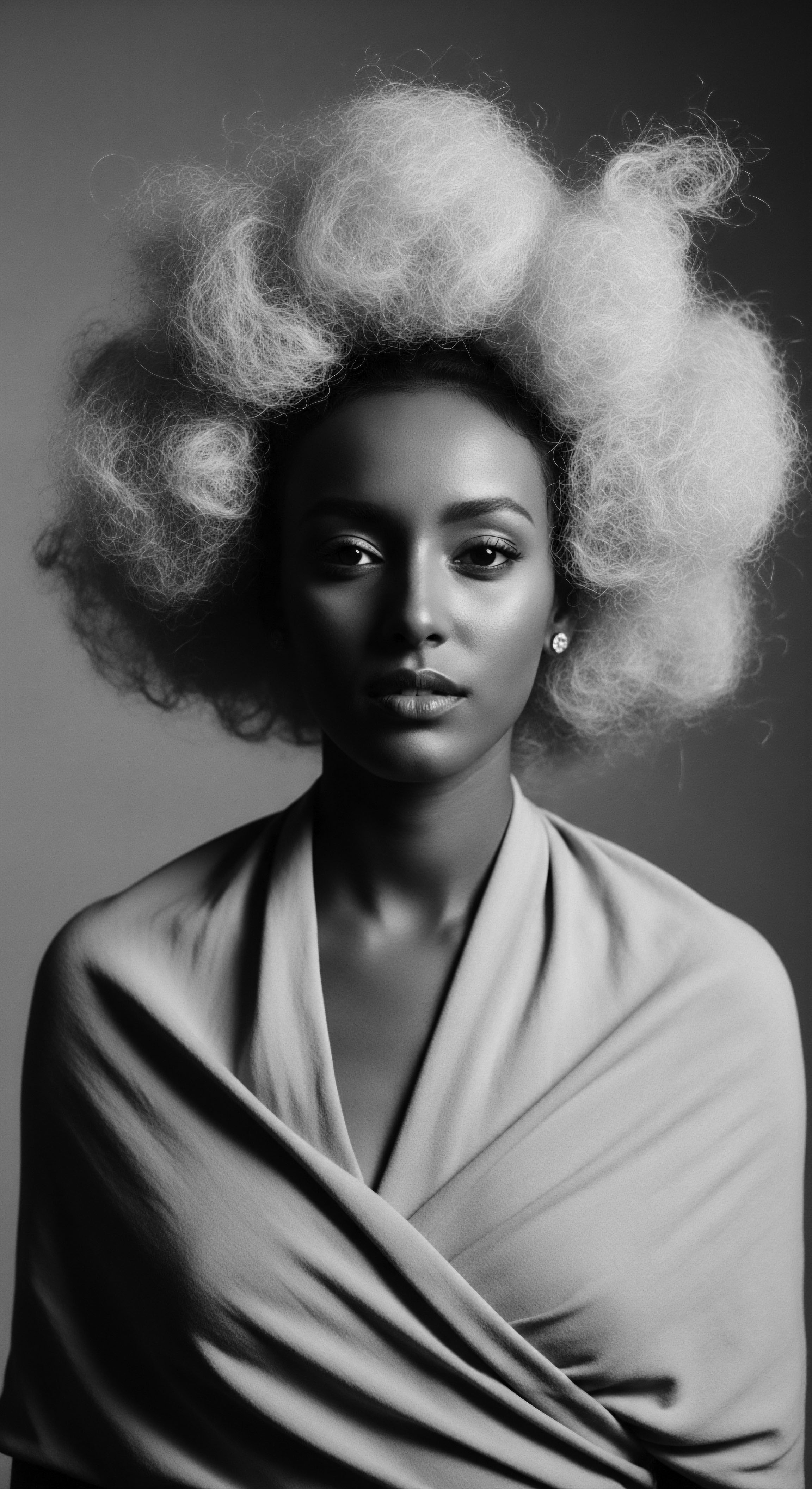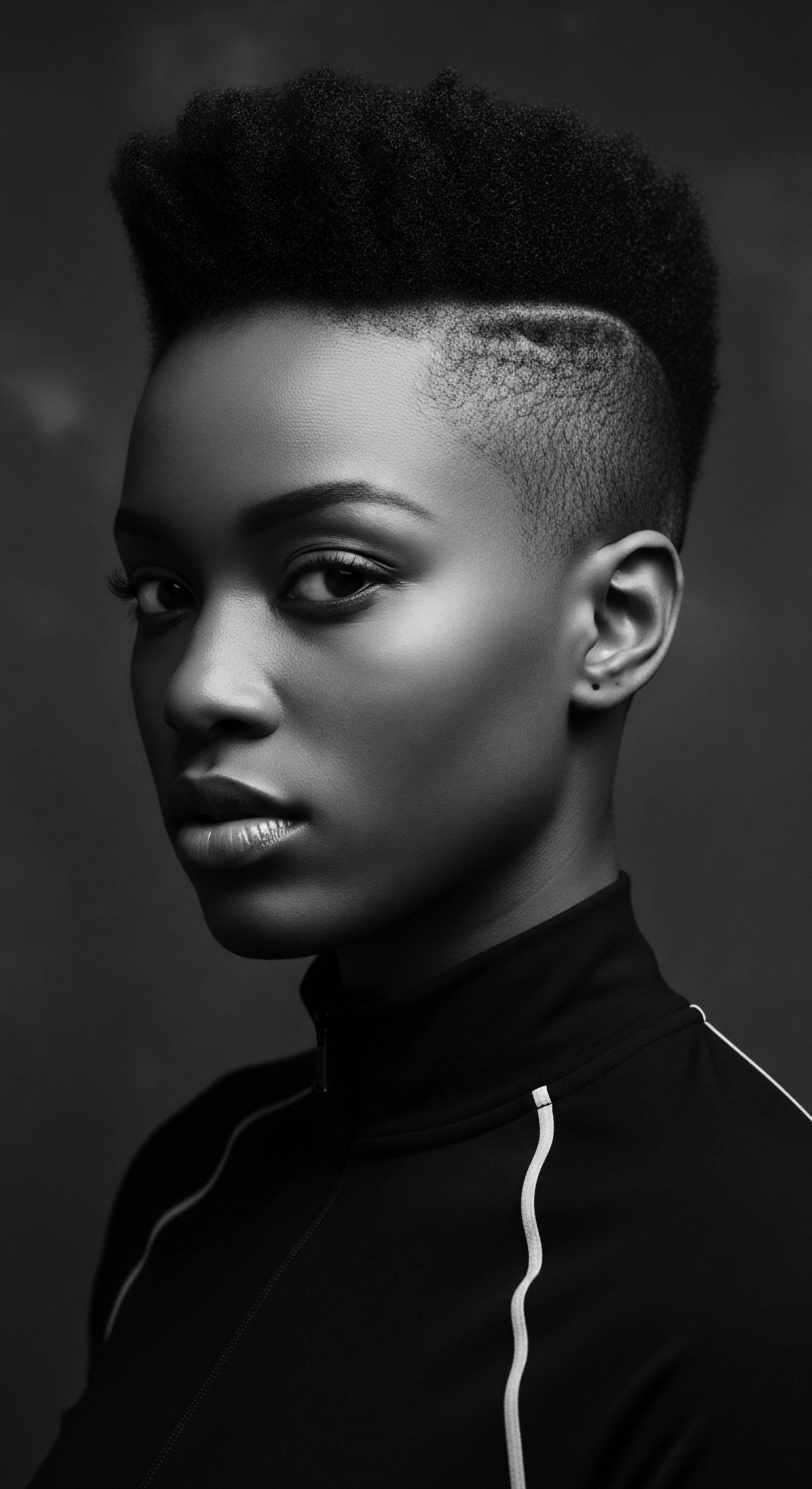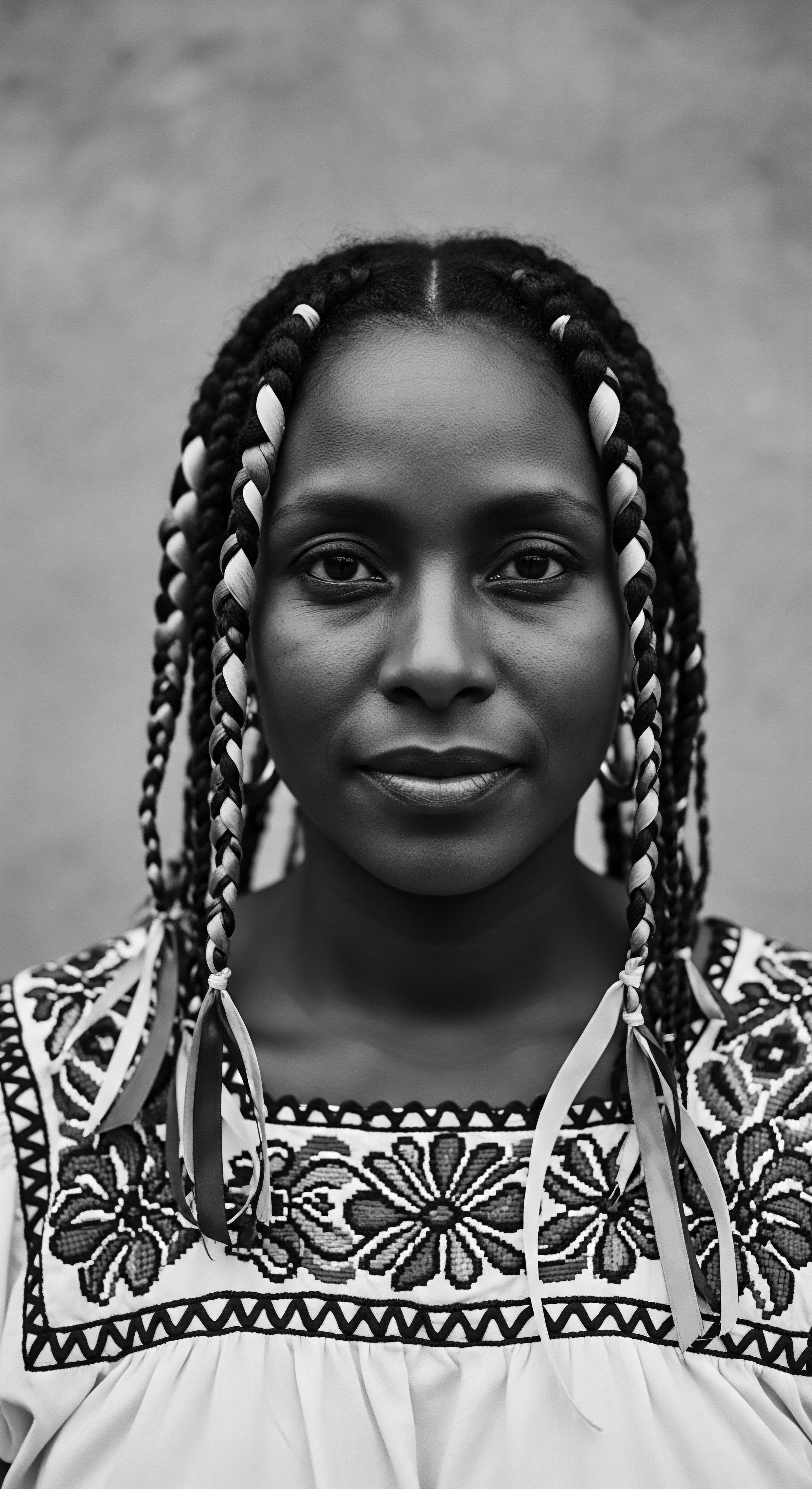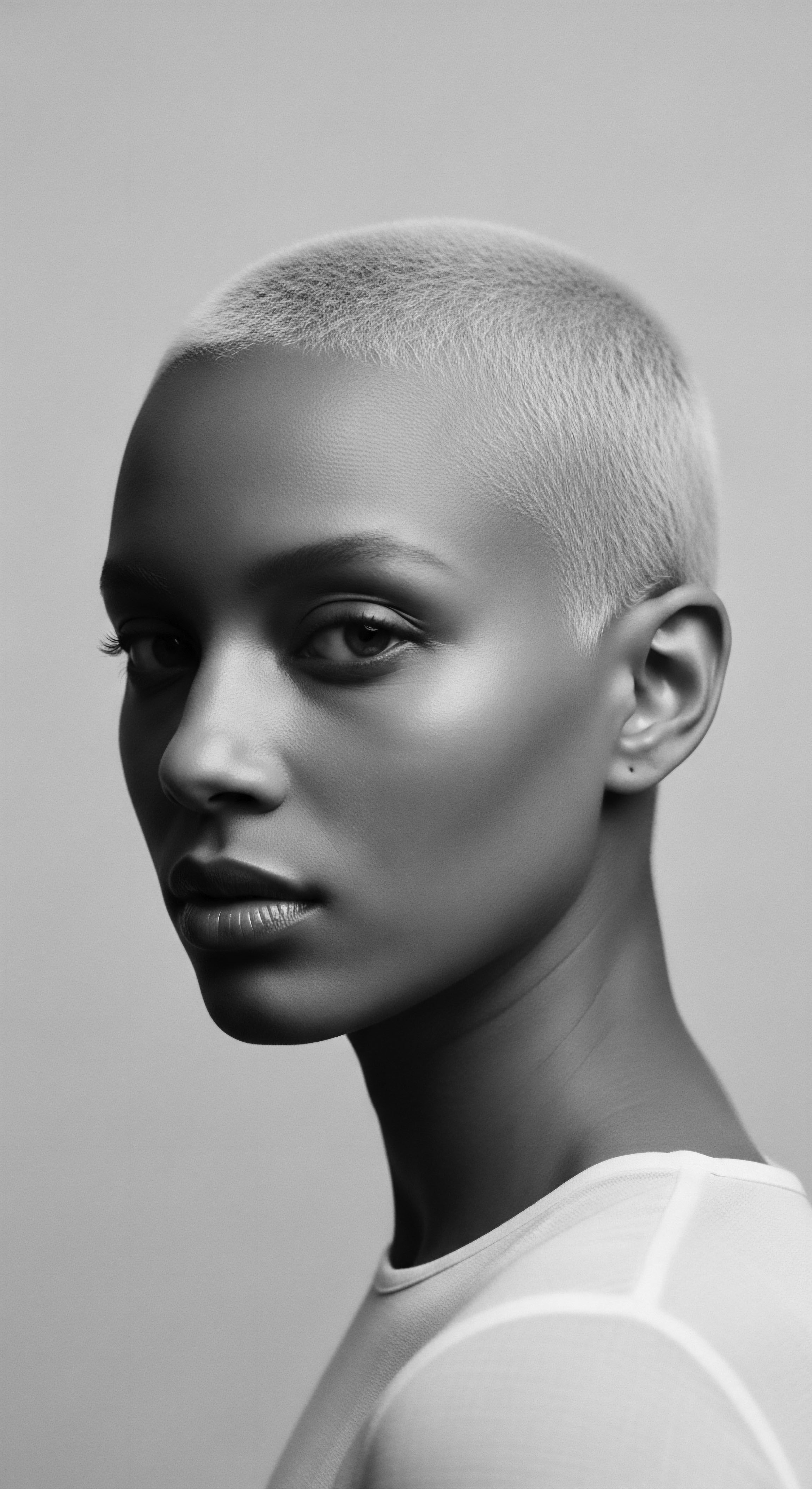
Roots
There exists a profound, unspoken language within each coil, kink, and wave, a legacy whispered across generations. For those who bear the unique crown of textured hair, the act of cleansing is never simply about hygiene; it is a resonant conversation with an ancient past, a dialogue with resilience, and a testament to enduring spirit. Our strands hold memories of sunlight on ancestral lands, of hands that braided meaning into every twist, and of a complex journey through shifting perceptions. Understanding what historical events shaped the perception of textured hair cleansing means listening closely to these echoes, tracing the intricate patterns etched by time, culture, and circumstance.

Ancestral Reverence How Was Textured Hair Honored?
Long before the imposition of external beauty standards, textured hair in pre-colonial African societies was a canvas of identity and a conduit for spiritual connection. Hair was not merely an aesthetic feature; it was a living map displaying one’s status, age, marital standing, and even tribal affiliation. Cleansing rituals were integral to this deep reverence, far removed from any notion of shame or burden.
They were deliberate, communal ceremonies, often steeped in the knowledge of local botanicals and natural elements. The Yoruba people, for instance, regarded hair as the body’s most elevated part, believing braided styles could communicate with deities.
The practice of hair care, including cleansing, was a social occasion, a moment for bonding and shared wisdom. Women would gather, often over days, to wash, oil, braid, and adorn hair with shells, beads, or cloth. This was an unhurried, thoughtful process, reflecting a holistic approach to wellbeing where external care mirrored inner harmony.
The very act of washing was a gentle engagement, a preparation of the hair for its role as a symbol of prosperity and cleanliness. Amongst women, having thick, long, clean, and neat hair, often braided, signified the ability to produce bountiful farms and healthy children.
The ancient practices of textured hair cleansing were not mere routines; they were sacred rituals deeply woven into the fabric of identity and community in pre-colonial societies.

The Elemental Science of Early Cleansing
From a scientific standpoint, these ancestral cleansing practices often relied on the natural world’s inherent chemistry. The saponins found in certain plants, like the Yucca Root used by some Native American tribes, provided a gentle lather that purified the hair without stripping its natural oils. Similarly, Indigenous Australians utilized botanicals such as Silky Lemongrass and Wurruwarduwarda (spinifex Grass) for their cleansing and soothing properties, often blended with coconut oil. The wisdom of these approaches lay in their ecological sensitivity and their alignment with the hair’s unique structure, preserving its inherent moisture and strength.
In other regions, the use of Rhassoul Clay in North Africa or the ancient Ayurvedic practice of using a blend of Reetha (Indian Soapberry), Amla (gooseberry), and Shikakai (acacia) in India demonstrates an innate understanding of natural surfactants and emollients. These ingredients worked in concert with the hair’s biology, providing a delicate yet effective purification. This early knowledge, passed down through oral traditions and communal practice, formed the bedrock of textured hair cleansing, a foundation built on respect for both the strand and the earth.
| Botanical Source Yucca Root |
| Geographic Origin North America |
| Traditional Cleansing Property Natural saponins for gentle lather and purification. |
| Botanical Source Rhassoul Clay |
| Geographic Origin North Africa |
| Traditional Cleansing Property Absorptive properties, removing impurities and softening hair. |
| Botanical Source Reetha, Amla, Shikakai |
| Geographic Origin Indian Subcontinent (Ayurveda) |
| Traditional Cleansing Property Herbal blend for cleansing, nourishing, and conditioning. |
| Botanical Source Silky Lemongrass |
| Geographic Origin Indigenous Australia |
| Traditional Cleansing Property Antimicrobial and soothing properties for scalp health. |
| Botanical Source These ancestral ingredients reflect a profound understanding of nature's bounty for holistic hair and scalp wellness. |

Ritual
The rhythmic practice of wash day for textured hair is more than a simple chore; it is a ritual, a continuation of practices born from ancestral wisdom and shaped by historical currents. This tender thread of care, connecting past and present, has adapted through times of both profound cultural celebration and immense adversity. The rituals of cleansing, conditioning, and styling are deeply intertwined with identity, community, and the very act of preserving one’s unique heritage.

The Middle Passage and Shattered Practices
A profound shift in the perception and practice of textured hair cleansing arrived with the transatlantic slave trade. This brutal period marked a deliberate assault on the identity and spiritual connection that hair held in African societies. One of the first acts of dehumanization by slave traders was the shaving of captives’ heads, a violent severance from their cultural identity and ancestral homeland. This act also removed access to traditional cleansing tools and nourishing ingredients, leaving enslaved Africans in foreign lands with limited resources.
The forced conditions of slavery meant clean water and proper hair care supplies were scarce. Enslaved individuals, stripped of their ancestral tools and time, often resorted to using available substances like Butter, Bacon Fat, or Goose Grease for lubrication and makeshift cleansing, sometimes combined with harsh lye. This stark reality led to matted, tangled hair, which oppressors then used to further pathologize and denigrate textured hair, classifying it as “unclean” or “unmanageable,” a stark contrast to its revered status in pre-colonial Africa. This historical event, the deliberate disruption of cleansing rituals and the imposition of Eurocentric standards, profoundly shaped the perception of textured hair cleansing as something associated with difficulty and inferiority, a belief that regrettably lingered for generations.

What Did Necessity Inspire in Cleansing Methods?
Despite the immense oppression, ingenuity and resilience defined the experience of cleansing textured hair during this period. Sundays, often the only day of rest, became a dedicated time for hair care. This “wash day” evolved into a communal ritual, a sacred space where knowledge was shared and bonds were strengthened. Enslaved women would gather, exchanging techniques and using makeshift tools and ingredients to care for their hair and each other’s.
This adaptation demonstrates an unwavering commitment to self-care and the preservation of cultural practices, even under the most brutal conditions. The use of headwraps, for instance, became a means of both protecting hair from harsh labor conditions and subtly defying imposed European beauty standards.
These practices, born of necessity, laid a foundation for future generations, transforming the act of cleansing into a powerful symbol of endurance and cultural continuity. The understanding of hair cleansing became tied not just to personal hygiene, but to resistance, community, and the quiet assertion of identity against a backdrop of systemic dehumanization.
The forced deprivation of traditional cleansing practices during slavery ironically deepened the ritualistic meaning of hair care, transforming it into a powerful act of resistance and community building.
- Wash Day Ritual ❉ Sundays became dedicated to communal hair care, sharing techniques and strengthening bonds amidst adversity.
- Resourcefulness ❉ Makeshift cleansing agents included butter, bacon fat, and even kerosene, used to lubricate and manage hair when traditional supplies were denied.
- Protective Styles ❉ Headwraps offered both protection and a subtle act of defiance against European standards.

Relay
The journey of textured hair cleansing from ancestral reverence to contemporary recognition is a complex relay, passing wisdom and struggle across eras. The perception of cleansing, once a sacred act, was fractured by historical oppression, then slowly, purposefully reassembled through acts of defiance, innovation, and self-acceptance. This historical trajectory reveals a deep interplay of social pressures, economic forces, and cultural reclamation, each shaping how textured hair is perceived and cared for today.

How Did Eurocentric Standards Reshape Cleansing Perceptions?
Following emancipation, the echoes of slavery’s dehumanization persisted. A societal hierarchy of hair textures emerged, with straight, European-mimicking hair deemed “good” and desirable, while naturally textured hair was often labeled “bad,” “unkempt,” or “unprofessional.”, This pervasive Eurocentric beauty standard profoundly influenced the perception of cleansing. Cleansing was often framed not as an act of nourishing one’s natural coils, but as a preparatory step for straightening or “taming” hair. The focus shifted from enhancing inherent texture to altering it, demanding products and methods that facilitated conformity rather than celebration.
This period witnessed the rise of industries dedicated to hair straightening. Yet, within this landscape of imposed standards, a powerful wave of Black entrepreneurship began to emerge. Figures like Madam C.J. Walker and Annie Turnbo Malone, understanding the unique needs and challenges faced by Black women, created and marketed specialized hair care products.
Madam C.J. Walker’s “Wonderful Hair Grower,” for example, was a vegetable shampoo formulation, less harsh than the lye-based soaps often used for cleansing at the time. Her approach not only addressed scalp conditions but also provided a vital alternative to damaging straightening methods, subtly shifting the narrative of cleansing from mere conformity to a practice of healing and maintenance. These pioneers created economic opportunities and spaces where textured hair care could be discussed and practiced, laying foundations for self-sufficiency and communal support within the beauty industry.

The Resurgence of Self How Did the Natural Hair Movement Affect Cleansing?
The mid-20th century, particularly the Civil Rights Movement and the subsequent Black Power Movement, brought a profound cultural awakening that directly challenged these ingrained perceptions. The Afro hairstyle rose as a potent symbol of Black pride, identity, and a deliberate rejection of Eurocentric beauty norms. This cultural shift profoundly impacted the perception of textured hair cleansing.
The goal of washing hair was no longer primarily to prepare it for straightening; it was to hydrate, define, and honor its natural form. The return to Afrocentric styles brought renewed interest in traditional ingredients and methods that supported the health and vitality of coily textures.
This period witnessed a reclamation of the communal “wash day” as a cherished cultural ritual, a time for self-care and intergenerational teaching. As Zenda Walker describes in her book “Know Your Hairitage ❉ Zara’s Wash Day,” this weekly ritual became an important way to connect with Black heritage and African roots, serving as a “rite of passage” for many. This shift was not merely aesthetic; it was a socio-political statement, declaring that textured hair, in its unadulterated glory, was inherently beautiful and worthy of respect. The perception of cleansing transformed from a means of erasing identity to a powerful act of affirmation and cultural preservation.
The natural hair movement profoundly reoriented textured hair cleansing from a preparatory step for conformity to an act of self-affirmation and a celebration of ancestral beauty.
The present moment continues this relay, with a vibrant natural hair movement that champions authenticity and holistic wellness. A significant aspect of this modern movement involves a return to traditional ingredients and practices, often validated by contemporary science. Indigenous botanicals, previously marginalized, are now being recognized for their efficacy in cleansing and nourishing textured hair. This contemporary embrace represents a full circle, connecting modern understanding with the ancient wisdom of cleansing, solidifying textured hair’s place as a symbol of heritage, resilience, and unapologetic beauty.
- Madam C.J. Walker ❉ Pioneered hair products specifically for African American women, including a vegetable shampoo less harsh than lye.
- Annie Turnbo Malone ❉ Established Poro College, training women in hair care and promoting scalp health, contributing to Black economic empowerment.
- Lyda Newman ❉ Invented an improved hairbrush with synthetic bristles and a detachable cleaning component in 1898, enhancing textured hair maintenance.

Reflection
The perception of textured hair cleansing, as we have seen, is a saga etched deeply into the contours of collective memory and lived experience. It is a narrative that flows from the sun-drenched practices of ancestral lands, through the crucible of enslavement and colonial imposition, into the purposeful acts of reclamation and self-definition. Each historical event, each societal pressure, each quiet act of resistance, has shaped not only the physical practices of cleansing but also the profound emotional and cultural meaning attached to the very act of caring for textured strands.
At Roothea, we understand that every wash, every detangling, every moisturizing touch is a continuation of this living heritage. It is a moment to honor the resilience of those who, despite unimaginable challenges, found ways to cherish their hair, to transform the mundane into the sacred. The ‘Soul of a Strand’ ethos reminds us that hair cleansing is an opportunity to connect with this enduring legacy, to infuse our routines with ancestral wisdom, and to recognize the inherent beauty and strength residing within each unique curl. We move forward not by forgetting the past, but by drawing strength from its lessons, allowing the stories of our hair to guide us toward a future where cleansing is always an act of profound self-love and cultural celebration.

References
- Mbilishaka, A. (2023). What Every Dermatologist Must Know About the History of Black Hair. Journal of the National Medical Association, 115(6), 1011-1018.
- BLAM UK CIC. (2022, September 15). The History of Black Hair .
- Afriklens. (2024, November 1). African Hairstyles ❉ Cultural Significance and Legacy .
- NativeMag. (2020, May 20). Examining the history and value of African hair .
- Dube, M. & Williams, P. (2025). Historical Perspectives on Hair Care and Common Styling Practices in Black Women. Journal of Dermatology and Cosmetic Surgery, 9(1), 1-5.
- Heaton, S. (2021). Heavy is the Head ❉ Evolution of African Hair in America from the 17th c. to the 20th c. Library of Congress.
- Halo Collective. (n.d.). End Hair Discrimination .
- Natureofthings. (2023, November 16). The Legacy of Lathers ❉ Tracing the Historical Use of Natural Ingredients .
- Tshiki, N. A. (2021, November 23). African Hairstyles – The “Dreaded” Colonial Legacy. The Gale Review.
- Morrow, B. (2025, January 23). Hair Care Practices from the Diaspora ❉ A Look at Africa, America, and Europe .
- Bush Medijina. (n.d.). Native Botanicals ❉ What we use in our Bush Medijina products .
- Vercida. (n.d.). A Black “Hair” story Crowning Our Glory .
- C+R Research. (2024, December 3). The Connection Between Hair and Identity in Black Culture .
- Prose. (2020, February 4). The Evolution of Black Hair Care .
- C+R Research. (2024, January 4). Hair Love ❉ The Evolution of Hair Acceptance + Discrimination in the Black Experience .
- 22 Ayur. (n.d.). The Ancient Natural Ways of Hair Care Across Continents .
- Nuevo Noir. (2024, March 16). The history of Afro hair .
- University of Salford Students’ Union. (2024, October 29). The Remarkable History Behind Black Hairstyles .
- Saving Face. (n.d.). Amazing Hair Shampoo – Cleanse & Revitalize with Australian Botanicals .
- Duru, C. B. & Adunbarin, N. (2023). The Person Beneath the Hair ❉ Hair Discrimination, Health, and Well-Being. International Journal of Environmental Research and Public Health, 20(15), 6511.
- WhiteLotusHairStudio. (n.d.). Black Hair History .
- Hanß, S. (2016). Hair, Emotions and Slavery in the Early Modern Habsburg Mediterranean. History Workshop Journal, 87(2), 160-187.
- Sister Sky. (2023, November 30). Native American Wisdom of Hair Washing .
- Noireônaturel. (2024, January 1). How frizzy hair saved the lives of slaves .
- ADJOAA. (2024, February 8). The Recent History of Hair in Afro-American Culture .
- JCSU Library. (n.d.). Inventor Highlight-Madame C. J. Walker .
- Living on Earth. (2024, June 14). Roots of Black Hair Care .
- ELLE. (2020, October 22). A Brief History Of Black Hair Rituals .
- Never the Less Inc. (n.d.). History of Black Hair Care .
- Uhuru Botanicals. (n.d.). Uhuru Botanicals .
- Colleen. (2020, August 28). The History of Textured Hair .
- Nature’s Little Secret. (2025, February 20). The History of Black Hair Care ❉ Trailblazers Who Paved the Way .
- Yaye. (2025, March 8). Shampoo & Conditioner with a Purpose – Indigenous Haircare for Healthy .
- Madam C.J. Walker Official. (n.d.). Annie Malone and Madam C.J. Walker ❉ Pioneers of the African American Beauty Industry .
- Orlando Pita Play. (2023, November 17). Haircare Rituals Around the World ❉ Exploring Global Traditions .
